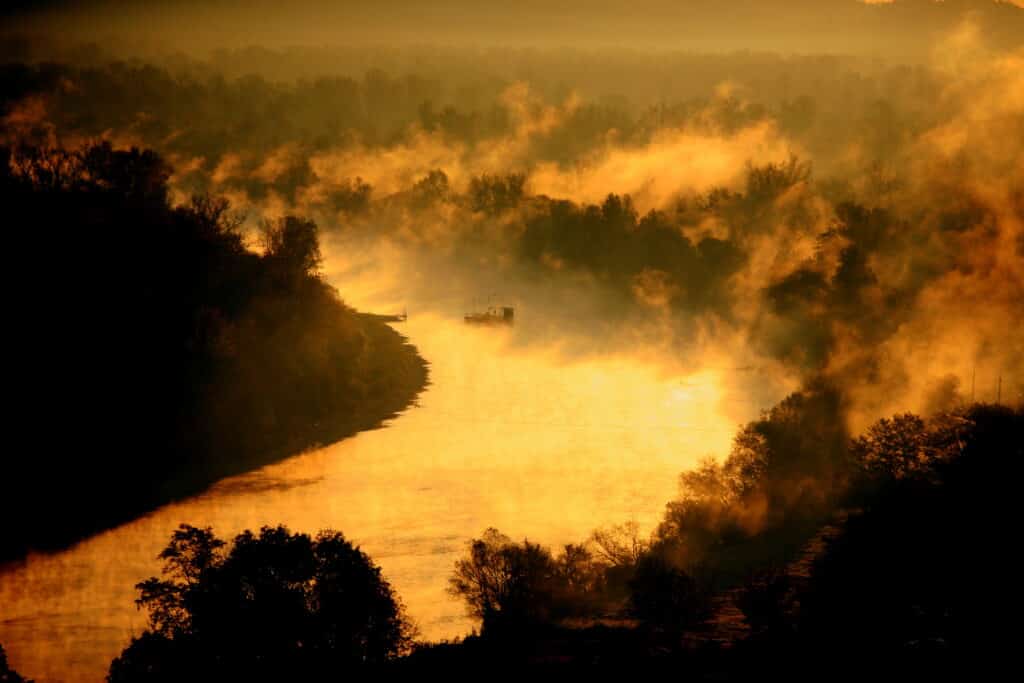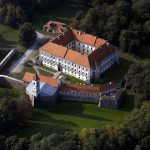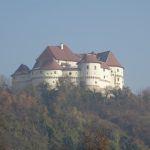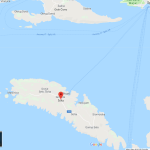A small town with a long tradition, Samobor is a popular weekend getaway spot near Zagreb. Full of charm, history and gourmet treats, it is also a gateway to magnificent natural treasures.
- Welcome to Samobor!
- How to get to Samobor and get around
- 5 things not to miss in Samobor
- Where to stay?
- Where to eat?
- Festivals in Samobor
- Top 3 day trips from Samobor
- 5 things you didn’t know about Samobor
Welcome to Samobor!
A charming little town with a rich urban history, Samobor has been attracting visitors seeking rest and relaxation for more than a century. Options range from an easy stroll around the old town and its parks to an adventurous day out in a vast nature park. In any case, lovely scenery, friendly atmosphere and hearty food will follow you all the way.
How to get to Samobor and get around
Plane
As Samobor lies within Zagreb County, Zagreb Airport is the easiest option when flying in. It takes only half an hour by car to reach Samobor. The second closest big international airport is the one in Ljubljana, Slovenia, about an hour and a half from Samobor.
Road
Samobor is one of the biggest towns in Zagreb County, so it is very well connected. Located right next to the A2 Motorway connecting Zagreb and Ljubljana, it’s within easy reach from both directions. From the very center of Zagreb, you should be in Samobor in 30-45 minutes, depending on the traffic.
Samoborček company operates the buses between Samobor and Zagreb. There are several lines, one from the Central Bus Station in Zagreb, and the other two use the bus terminals in Črnomerec and Ljubljanica. All the lines run at least once in an hour during the day.
Looking for a fast, reliable and trouble-free transfer to or from Samobor? Contact TC transfer partner Adriatic Transfers for your one-stop solution.
Cable ferry
Not really a relevant way of travelling to and from Samobor, but rather an unusual side attraction. The towns of Samobor and Zaprešić are quite close, but since the Sava River divides them, it takes a while to get to the nearest bridge and bypass it.
An old-fashioned little cable ferry crosses the Sava in Medsave and shortens the trip by 17 kilometers. Whether you’re on foot, riding a bike or car, for a few kunas you can experience this unusual ride, almost a time machine. For more information, call the ferry operators on 091 359 9928.
5 things not to miss in Samobor
Kremšnita on the Kralj Tomislav Square
The hub of social life in Samobor is its lovely main square. It is named after King Tomislav, the first king of Croatia. Around it are beautiful historic buildings, all of them protected cultural heritage and each with a unique story. On the weekends, the square is packed with people relaxing over a cup of coffee and enjoying the town’s famous custard cream cake called kremšnita.
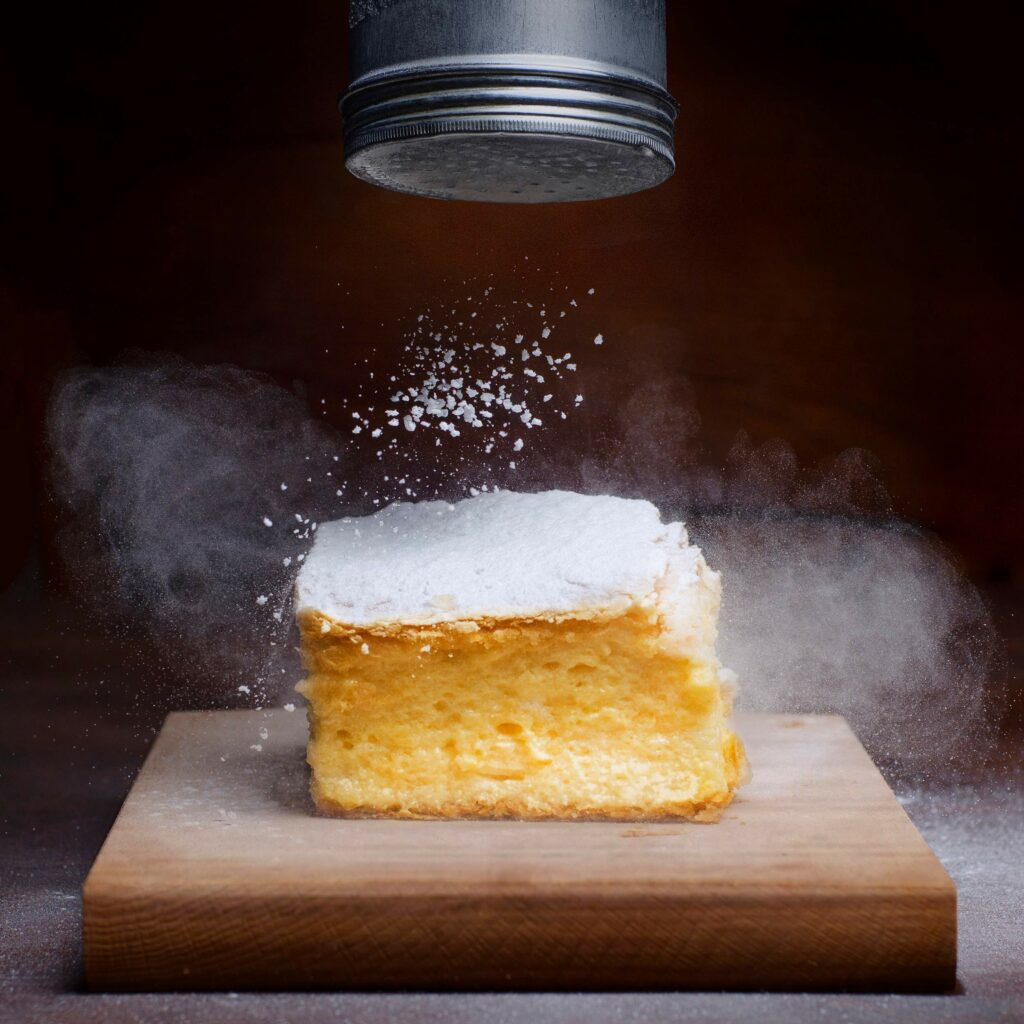
Protected and listed in Croatia’s Register of Cultural Goods, it consists of two layers of puff pastry and fluffy custard cream. The only two places serving the authentic Samobor-style kremšnita are located on the square: U prolazu pastry shop and Livadić café.
Walk to the Old Town Samobor
Stari Grad literally means the Old Town. But this does not refer to the historic main square and the streets around it. Yet, if you raise your eyes, you’ll see the remains of on old castle overlooking the city. It was built as a defense fortress in the 13th century. Over the centuries it expanded into a larger castle, owned by several noble families. Today it is only a ruin, but also a nice reason the climb the hill of Tepec. Fun fact: it was one of the locations for Jackie Chan’s 1986 movie Armour of God.
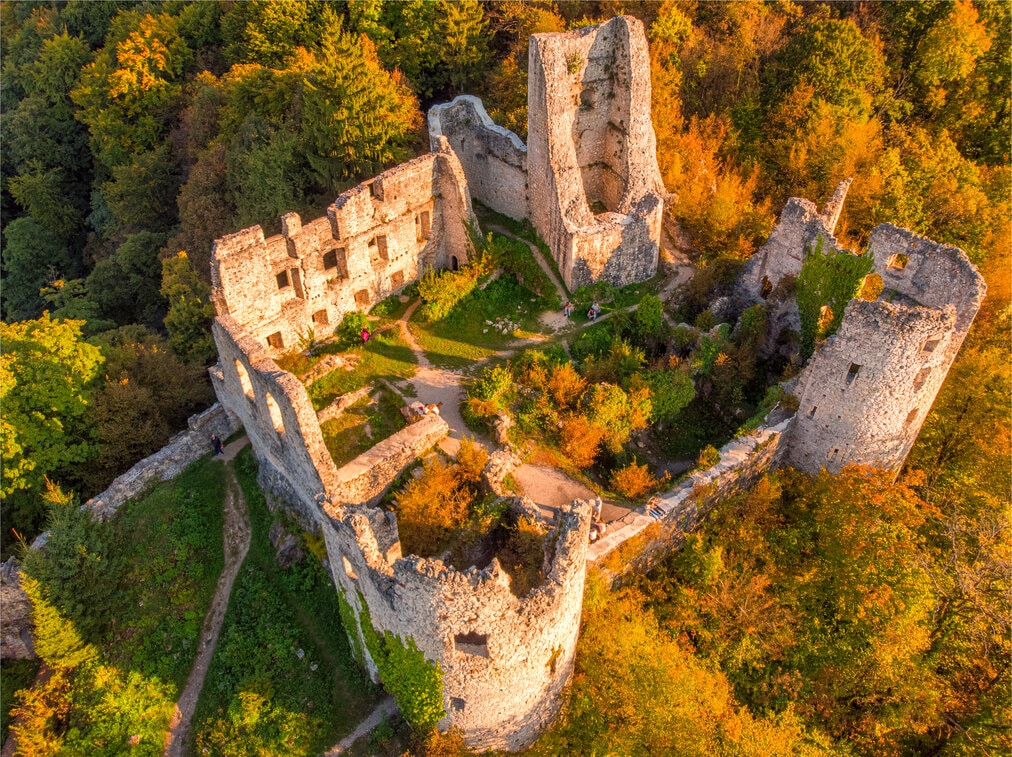
Cross the little wooden bridge just off the main square and follow the Gradna stream to get to the Old Town Samobor. Along the way, feel free to check out the Samobor Museum, in an old manor right next to the stream. The walk to the scenic ruins takes around 20 minutes and it is not demanding. To change the scenery on the way back to the center, choose Anindol. This tranquil promenade and forest park above Samobor features several attractions.
Fourteen Stations of the Cross, an artwork in stone, can be found between St. Anne’s Chapel and St. George’s Chapel. A bit further uphill stands a 14-meter high metal construction – a viewpoint called the Anindol Pyramid. A quaint wooden pavilion, used as a dancing platform in the past, is a very romantic spot. Many famous 19th century writers used to stroll here in search of inspiration. And a piece of historic trivia – the Communist Party of Croatia was founded in these woods in 1937, as you can see on a small monument.
St. Barbara’s Mine in Rude
The village of Rude grew right next to one of the oldest copper and iron mines in Europe. The exploitation of ores started way back in the 15th century and lasted until the early 20th century. A lot of miners and skilled workers came from Germany and Austria, which explains a lot of German-sounding names around Rude. A small section of the long tunnels was restored and turned into an authentic tourist attraction in this century.
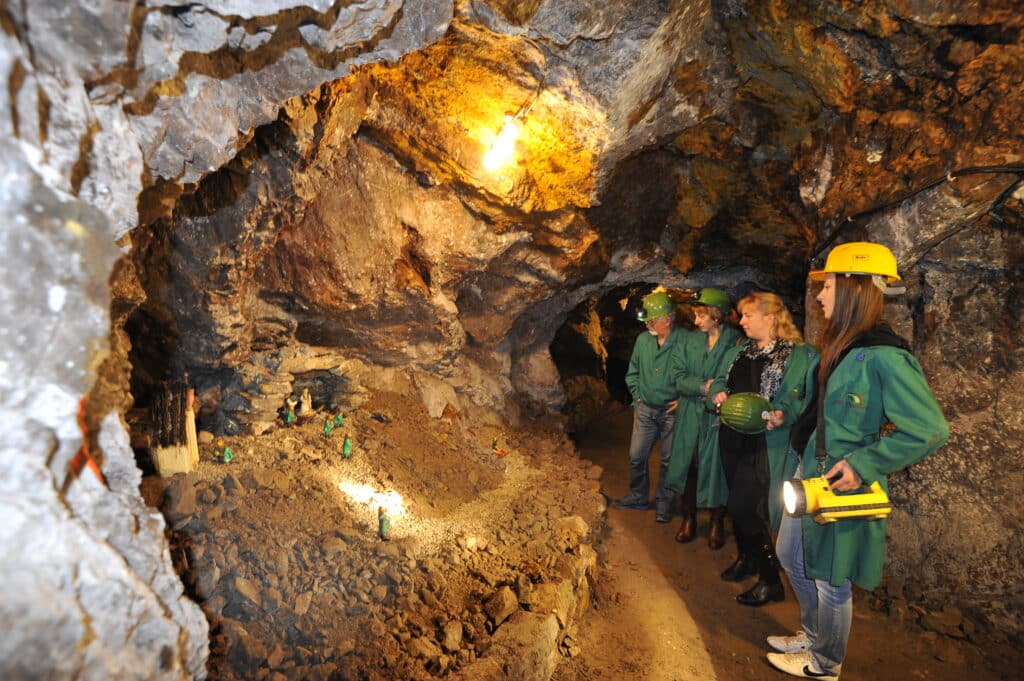
A walk through the dark and cold tunnels and pits of St. Barbara’s Mine is actually a fun experience for the whole family. The guided tour runs every hour on weekends. Apart from learning a lot about life in the mine, you might also bump into a bergman, a mischievous dwarf that messed with the miners and hid their things.
Hiking in Žumberak – Samobor Hills Nature Park
West of Samobor lies a vast area of green hills and forests, stretching along Žumberak Mountains and Samobor Hills. Neither of these ranges is too high (the highest peak is 1.178 m) or inaccessible in any way. Yet, they hold an impressive array of biodiversity, natural wonders and cultural heritage. The whole park is a heaven for hikers, climbers, cyclists and nature lovers. There is a huge network of marked trails, from really easy ones, to exciting challenges for experienced thrill seekers.
The most popular peaks for hiking are Japetić, Oštrc, Plešivica, Okić, and Sveta Gera. Often the most eagerly anticipated part of the trip is reaching a mountain hut! The homemade food and relaxed atmosphere bring comfort to the weary hikers. (In Željezničar mountain hut they even make their own beer!) One of the most attractive destinations is the canyon of Slapnica, a 10 kilometer long valley full of pristine wilderness, streams and waterfalls.
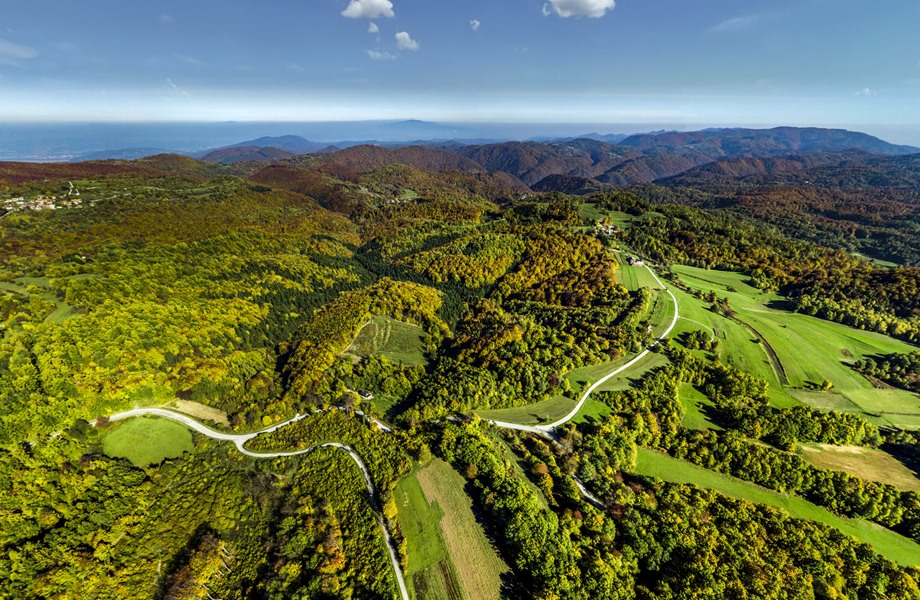
Even though this area has a very small population, it has a long and interesting history. Apart from nature itself, visitors can explore old ruins like Okić, or archaeological sites like Budinjak educational trail. Greek Catholic churches and the Museum of Uskoks remind of the days of Ottoman invasions. Wooden mills, preserved rural estates and ethnographic collections take you back a couple of centuries ago, when life thrived in this peaceful rural region.
Grgos Cave
Josip Grgos accidentally discovered a small but beautiful cave in 1963, while digging for lime. Declared a Geomorphologic Monument of Nature, today it’s open for visits, as one of the main attractions in the surroundings of Samobor. The cave consists of two halls, full of fascinating formations. It helps that it’s located next to Kod špilje, an excellent and very popular traditional restaurant owned by the Grgos family. (Wild game dishes come highly recommended!) There is also an educational hiking trail starting from this point, so the village of Otruševec really makes for a nice half-day trip.
Where to stay?
Tourism is not a new thing in Samobor. In the second half of the 19th century the town got its first spa and public park, so visitors started to flock. Especially after 1901, when the popular Samoborček train started connecting Samobor and Zagreb again. It stopped operating in 1979, but the legendary train is still on display in southern Samobor.
There are no large accommodation facilities, chains or resorts. Everything is small-scale in Samobor, but cozy and authentic. The two hotels in the very center offer enough comfort and a lot of history. You can find Hotel Livadić in a protected building from the 1800. Close by, Hotel Lavica was once a part of an old nobleman’s estate. Hotel Priča on the outskirts is something completely different, a small, modern place where each room has a different design and story.
(function(d, sc, u) {
var s = d.createElement(sc), p = d.getElementsByTagName(sc)[0];
s.type = ‘text/javascript’;
s.async = true;
s.src = u + ‘?v=’ + (+new Date());
p.parentNode.insertBefore(s,p);
})(document, ‘script’, ‘//aff.bstatic.com/static/affiliate_base/js/flexiproduct.js’);
There is also a very decent hostel in the center of Samobor, several B&Bs, and a lot of apartments and houses for rent. Outdoor lovers and dedicated hikers can find lodging in some of the mountain huts. The latest trend is renting a holiday house with a garden outside the city, surrounded by nature. These often include great amenities like a swimming pool, jacuzzi, sauna, games area, barbecue station. Hedonica House sounds particularly interesting because it is also the tasting room of an awarded small producer of brandies and liqueurs.
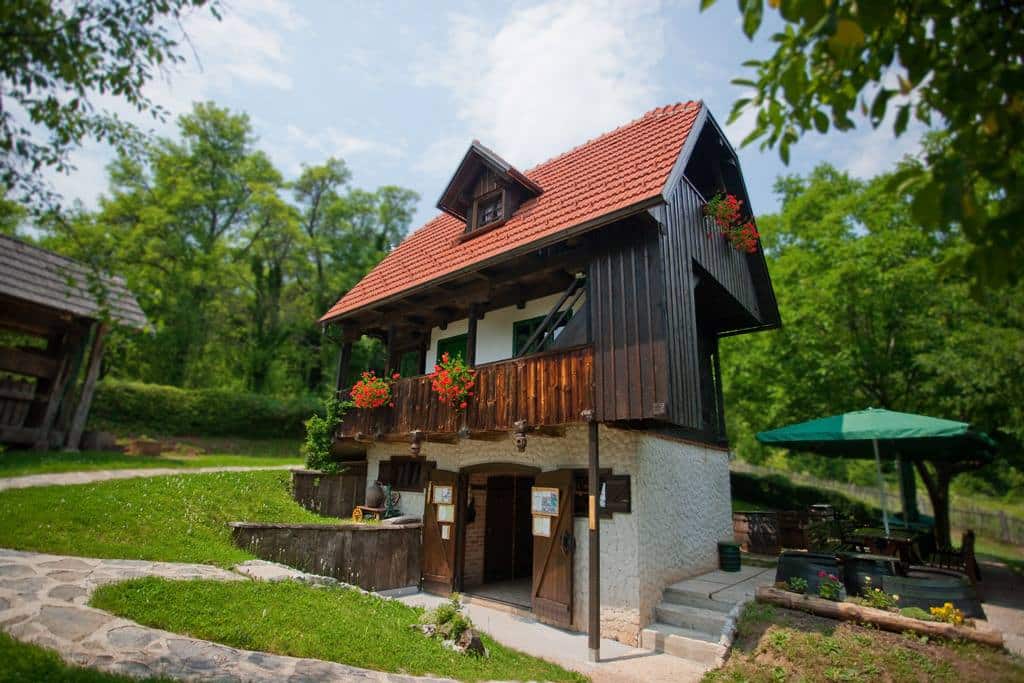
Campers are welcome in Etno kuća pod Okićem rural tourism, right next to Žumberak-Samoborsko gorje Nature Park.
Where to eat in Samobor?
People often have a problem with eating out in Samobor simply because it is hard to pick a place. There are many promising options, and you can almost count on being satisfied with your experience in anyof them. For a relatively small town, Samobor is a gourmet mecca. Currently the only products with protected origin in Zagreb County all come from the Samobor area. If you are a foodie traveler in search of something local and original, Samobor is definitely the place to be.
Local delicacies
Rudarska greblica is perhaps the most rare find. It is a savory pie, filled with fresh cottage cheese, walnuts and seasonal greens. Now it is a delicacy with a protected origin. In the past, however, it was just a modest lunch for miners in the village of Rude. The only certified place that makes the original greblica and its greatest advocate is the family-owned Nikl bakery. If you don’t make it to their bakery in Rude, they also have a kiosk in Samobor, in an alley connecting the main square and the farmers’ market.
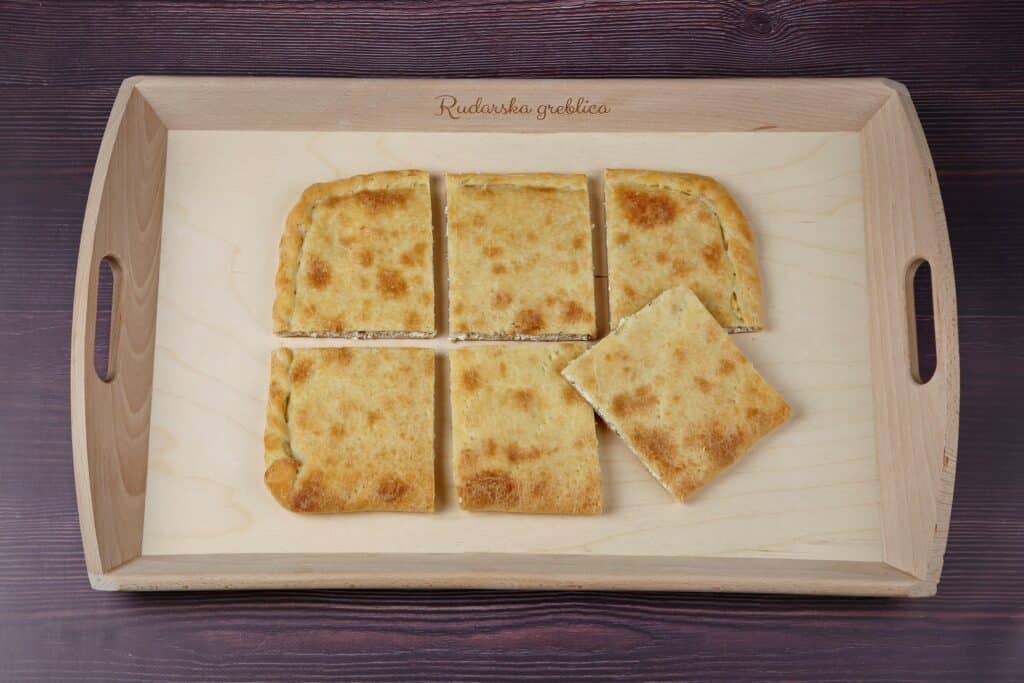
For many outsiders, kremšnita cake is the symbol of Samobor. This popular dessert is present in all parts of the country. However, Samobor locals take pride in the fact that the original recipe was devised in the 1920s by a local pastry chef. Simple looking, it is just two layers of puff pastry with custard cream in between. Yet, light and fluffy, it is quite irresistible. The best places to try it are U prolazu pastry shop and Livadić café on the main square.
Meat products are a big thing in this area. Making sausages is like an art form. The local pride is the so-called samoborska češnjofka, a pork sausage flavored with garlic. There is also the delicious Samobor salami, a traditional homemade product made to jealously guarded recipes. The procedure is now standardized and protected, and Samobor salami is a well-known specialty far and wide. It even has its own festival, the annual competition called Samoborska salamijada.
Restaurants
A great place to explore the local cuisine is the legendary Gabreku 1929 restaurant. Hearty traditional dishes based on seasonal ingredients will make you feel like a local family invited you over for lunch. Wild mushrooms are their forte, so don’t miss out on their famous mushroom soup. Or pancakes in wine sauce.
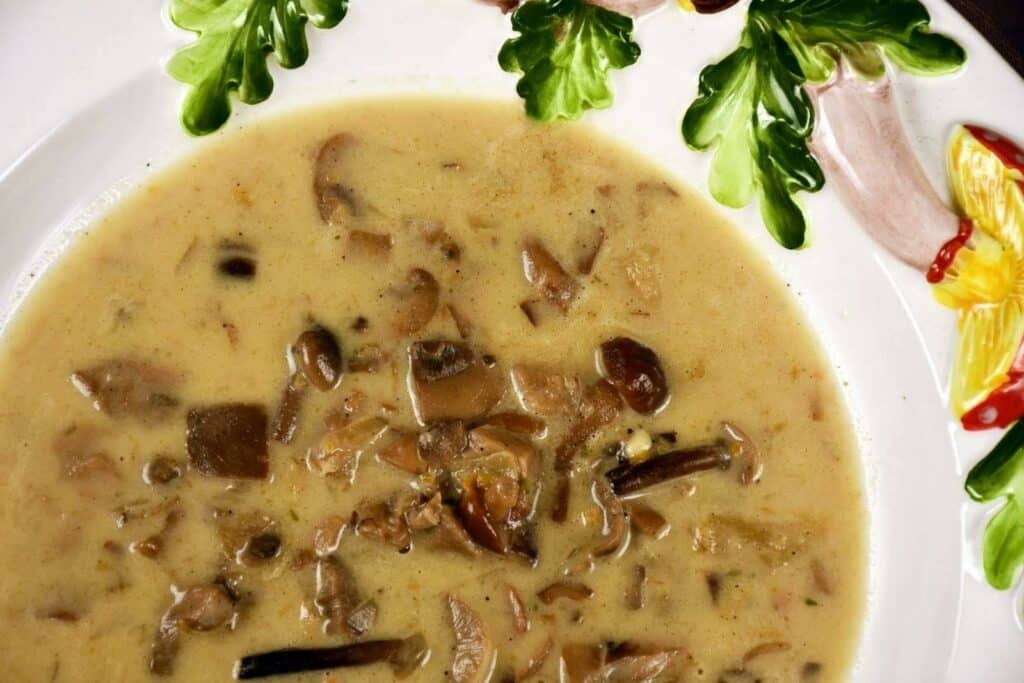
The already mentioned Kod špilje restaurant by the Grgos Cave delivers all the local classics on a high level. Samoborska pivnica is a reliable source of all the meat-based dishes typical for the area.
Weekends are the time to hit picturesque rural households serving food in the gorgeous landscape. Slavagora on top of the namesake hill has excellent homemade food and an amazing view. Streams of Žumberak abound in trout, and the best way to check that is to visit Kršlinov mlin, almost hidden in the wilderness around Bregana. Sitting directly on a stream next to an old mill and eating fish that still swam just minutes before is an unforgettable experience. Trout dominates the menu, from simply grilled to coated in pumpkin seed or stuffed with porcini mushrooms and bacon. Pavlin estate is another idyllic, rustic place to enjoy homemade food and wine, and they also provide lodging.
Bermet
However, in Samobor they know that before a proper meal one needs to gulp down an aperitif. Here they have their own, called Bermet. It is both sweet and bitter and to make it, red wine needs to be aromatized with wormwood, selected herbs and spice. The story goes that the drink came here with the French soldiers, when this area was a part of the Napoleon’s Empire. Yet, there is some proof that it predates the French and that the local pharmacists produced it as a remedy before the French came.
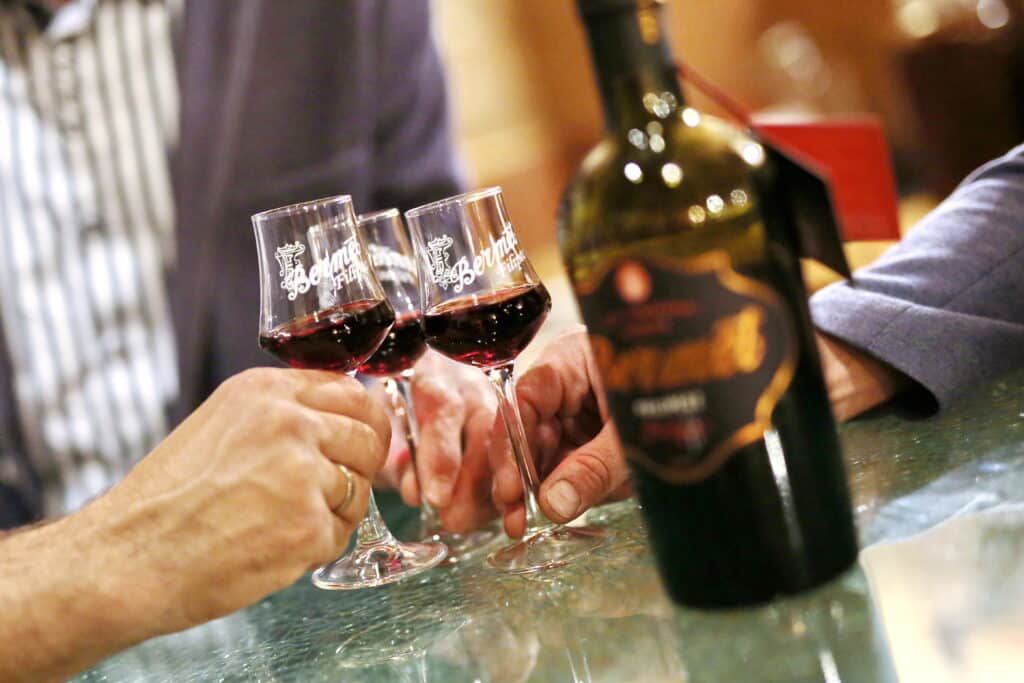
The most famous producer is the Filipec family. Their lovely tasting room and shop is just around the main square. They also produce Muštarda, another local specialty, an aromatic condiment similar to mustard. It pairs well with strong cheese, local sausages and meat.
Festivals in Samobor
There’s always something to do and something to celebrate in Samobor, all year round. The locals like to socialize, and it is not hard to find an adequate reason to gather around, have fun, and enjoy good food and drinks.
Samobor Carnival
The period before Lent and the arrival of spring is traditionally celebrated all over the country. Samobor Carnival (Samoborski Fašnik) is one of the major festivities. With almost 200 years of tradition, the Carnival is nowadays a big and eventful festival for all generations. In the past, there were gala balls for the higher classes, the first documented in 1827. Only later has the fun moved to the streets and squares.
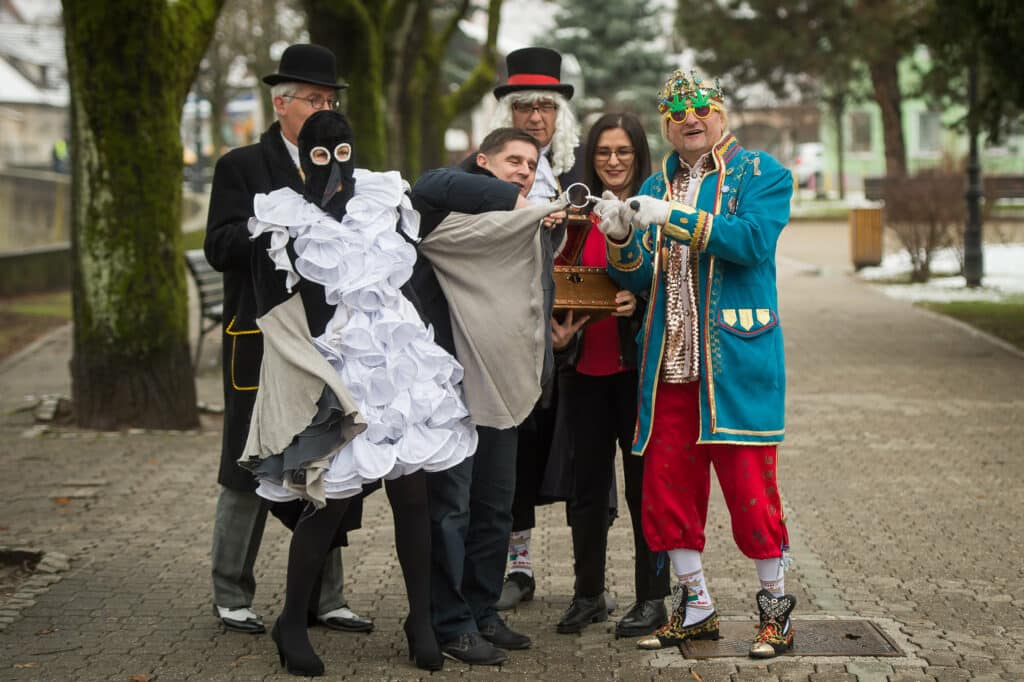
The official slogan sums it up perfectly: Fools go crazy every day, smart people only during the Carnival. Over the period of ten days, there are many masked parades, concerts and parties. It culminates on Fat Tuesday, when Fašnik, the symbol of all the vices of the year past, is burned, much to everyone’s joy. This is also the time to guiltlessly gorge on pokladnica, the seasonal doughnut filled with jam.
Vraz’s Ljubica
Stanko Vraz was one of the greatest poets from the period of the Croatian National Revival movement in the mid-19th century. His famous collection of love poems, “Đulabije”, was written for Julijana Cantilly, a girl from Samobor. And to revive the memory of this great love story, a poetry festival was established. Many big names from Croatian literature have participated in this prestigious and inspirational festival taking place every June.
Samobor Music Autumn
As a city of great cultural heritage, every autumn for more than 40 years, Samobor celebrates music. The program features top quality classical music performances, with special attention given to young talents.
Samobor Salami Festival
At first, Samobor salami was something that people made at home. Then some enthusiasts decided to organize a competition! How else would you settle all those discussions when everyone claimed their salami was the best!? Things escalated quickly (as they often do!) and the competition turned into a popular festival with international guests and lots of good fun.
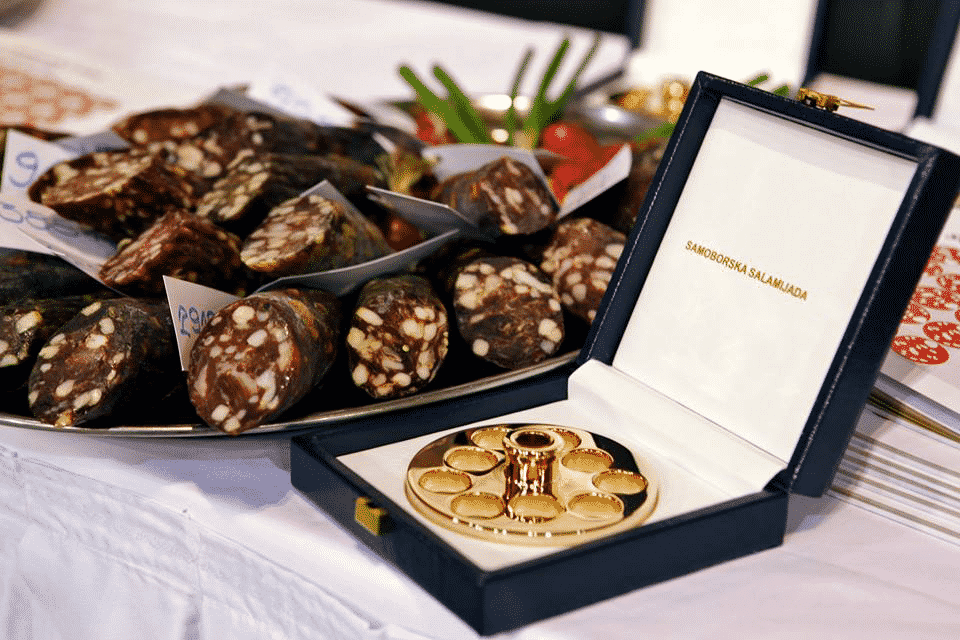
Days of Rudarska greblica
Dedicated to the modest savory pie from Rude, a protected specialty called Rudarska greblica, this festival was established in 1985. The whole village of Rude, where it takes place, becomes a big party and attracts many visitors. Apart from tasting, rating and glorifying greblica, it is also an opportunity to get to know the local folklore heritage.
Top 3 day trips from Samobor
Actually, Samobor is the most popular day trip destination for people staying in Zagreb. But why not turn things around, make Samobor your base and spend time exploring the wider area? Especially if you’ve seen enough of Zagreb and want to cross it from your list.
Plešivica Wine Road
Conveniently close to Samobor, on the other side of the Samobor Hills, lies the tiny but very prosperous wine region of Plešivica. It is also a nice hiking destination, so you can combine outdoor activities and wine tasting. There are at least ten excellent boutique wineries on Plešivica Wine Road worth a visit. Nicknamed “Croatia’s Champagne”, it’s the place known for premium sparkling wines.
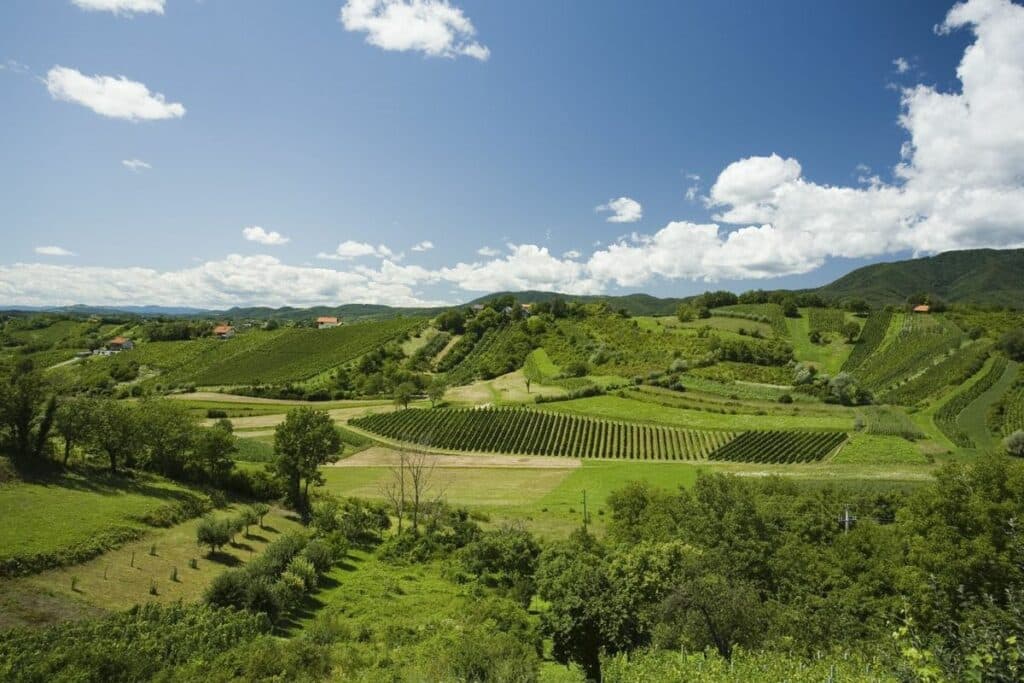
Also, it’s the home to high-quality Riesling, Pinot Gris and Pinot Noir, as well as some very successful experiments with long skin contact and aging wine in amphorae. Korak winery has gone the furthest in pairing Plešivica wines with creative cooking in their high-end fine dining restaurant.
Spa heaven in Terme Tuhelj
Northern Croatia is known for thermal spas, with Terme Tuhelj as one of the best known and possibly the biggest in Croatia. Located in a small village of Tuheljske Toplice, about 40 minutes by car from Samobor, it makes an excellent getaway option on a hot day. Or a cold and rainy day, since both the outdoor and the indoor options are very attractive.
There’s a giant outdoor water park guaranteed to keep kids and the kid in you entertained for hours. Indoor wellness facilities range from exotic beauty treatments and relaxing massages to a variety of saunas. All in all, there’s everything you might imagine for a pleasant day of self-indulgence.
Karlovac, the city on four rivers
Karlovac is so often overlooked! Most travellers see it only as the place you pass through on your way to Plitvice Lakes and the coast. So why not finally stop there for half a day, and let Karlovac surprise you? It is less than an hour from Samobor. And don’t forget your bathing gear, because in summer you can swim on several river beaches.
Unlike many places in Croatia, Karlovac knows exactly when it was founded. In 1579, a military outpost defended the area against the Ottoman attacks. The town was designed in the shape of a six-pointed star, which was seen as ideal in the age of the Renaissance.
Apart from the old town and riverfront parks, you can visit Aquatika, the only freshwater aquarium in Croatia, the Dubovac Castle, the Homeland War Museum, or take a cruise on the replica of an old grain boat.
5 things you didn’t know about Samobor
The first documented mountaineering trip in Croatia
One daring woman is the pioneer of mountaineering in Croatia. In 1843, a feminist, poet and teacher Dragojla Jarnević set out to climb the rock of Okić in Samobor Hills. She chose the southern, steeper side, which was quite a feat. Especially if you know she climbed the final stretch barefoot.
She wrote about her experiences, documenting the climb. It is the first documented climb, considered as the beginning of mountaineering in Croatia. “Dragojla’s trail” is one of the ways to reach the peak of Okić, but not for beginners. Every spring a local mountain climbing club organizes the exact same hike in her honor, but you can also do it on your own.
The first private museum in Croatia
In 2003, entrepreneur and art collector Veljko Marton founded the first privately owned museum in Croatia. Situated in a 19th century mansion, Marton Museum houses a unique collection of European decorative arts from the 18th and the 19th century.
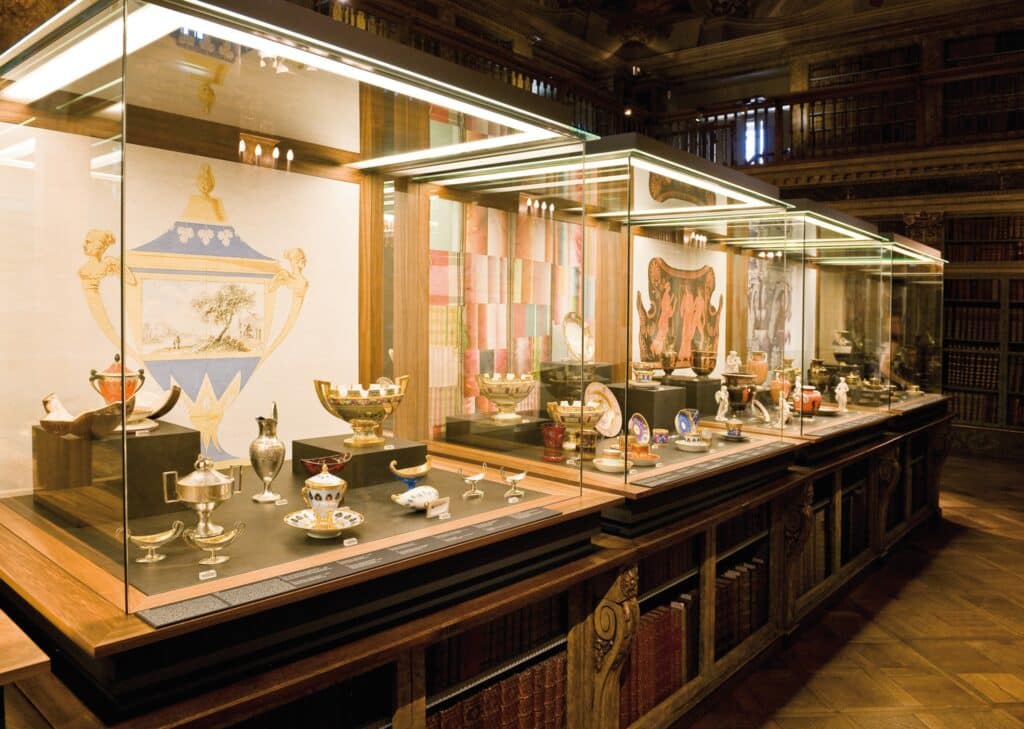
The collections on display include porcelain, silver, glass, furniture, clocks and paintings. It is a real treasure trove of beauty and craftsmanship from times long gone.
Gingerbread heart – local souvenir appreciated by UNESCO
Licitarsko srce, the famous red gingerbread heart, is a traditional decoration. Made of sweet honey dough, it used to be a gift or ornament for special occasions in the past. Today it is just a popular souvenir. In 2010, the folk art of making “licitars” found its way to the UNESCO’s Representative List of the Intangible Cultural Heritage.
Although these cute little hearts are found in many places in northern Croatia, Samobor is particularly proud of its long tradition of making licitars. Local family-owned crafts like Oslaković and Arko have their shops in Samobor and would be happy to show you what it’s all about.
Ferdo Livadić – composer whom Franz Liszt visited in Samobor
Ferdo Livadić lived in the 19th century and many consider him to be the first modern Croatian composer, heavily inspired by local folklore. He spent most of his life in Samobor and became the central figure of its social life. Apart from Zagreb socialites and intellectuals who frequently visited him, he also received distinguished foreign guests. One of them was Franz List, who dropped by to see his Samobor friend during a visit to Zagreb in 1846. Livadić’s beautiful house is now the home of Samobor Museum.
How the French affected the size of windows in Samobor
In the early 19th century, Samobor was part of the Illyrian Provinces, an autonomous area under Napoleonic Rule. Although the French ruled here very briefly, the influence of French culture undoubtedly had many positive sides. But there were some bizarre stories, too. The amount of tax paid on houses was determined according to the size of windows. It did not take long for the resourceful citizens of Samobor to figure out how to outwit the French taxmen – they simply bricked up their windows and left only small round holes. Later this obviously stopped, but when you see a tiny window on an old house, it still makes you wonder…
More information
Zagreb County Tourist Board: Preradovićeva 42, Zagreb; info@visitzagrebcounty.hr; www.visitzagrebcounty.hr

